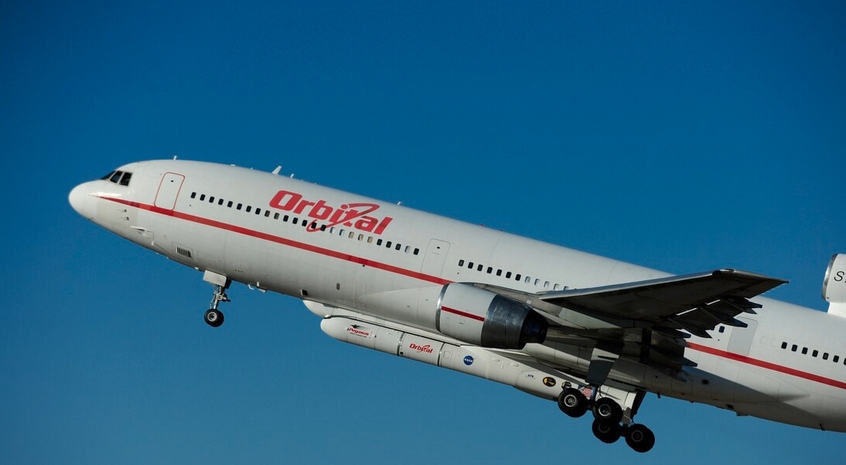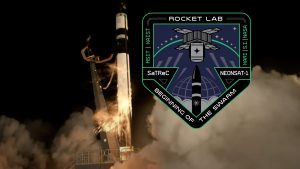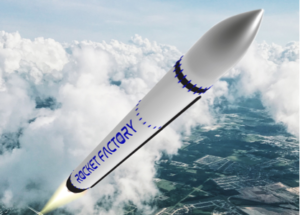Horizontal Launch Companies – the Complete Guide
3rd Apr 2023
Most of us picture a rocket launch, and we see a craft pointing at the sky, ready to be propelled with a huge amount of thrust and arrowed straight into space with a vertical launch. We’ve all seen iconic footage of this, as well as recreations in Hollywood movies.
However, horizontal launch has a crucial place in the industry, and since the technology was first proposed and hypothesised in the 1940s, horizontal launch has come a long way. In this guide, we’re exploring a history of the horizontal launch, and operators that are using this method to put satellites into space.
What is Horizontal Launch?
To put it in very simple terms, a horizontal launch is one facilitated by an aircraft that takes off on a runway, just like when you board a plane to go on vacation. The aircraft carries a rocket with it, and when the plane is in the air and up to a certain height and then the rocket can launch.
First, it detaches from the aircraft, ignites, and heads into orbit. You may also hear this type of launch described as “Air Launch to Orbit”.
Horizontal launches have their pros and cons when compared to vertical. The method uses a lot less fuel due to the fact that the plane takes the rocket to the the upper atmosphere, so it is generally a more efficient way of doing things. However, there are limits to how big the payload can be, and the method tends to work for small satellites rather than the big ones.
A Brief History of Horizontal Launch
To understand the context of where we are in the space industry right now, we need a picture of what has preceded, including some failures, and some roaring successes…
NOTS-EV-1 Pilot
The “Pilot” project was the US Navy’s first attempt to launch a satellite from the air. It was given the nickname ‘NOTSNIK’, a play on words on both NOTS and Sputnik.
Using an F-4D1 Skyray plane, the craft used motors derived from an anti-sub missile, which ignited in the air to followed by X-241 and NOTS motors designed to put the payload into orbit.
All the launches of the craft would fail. There were two different design configurations, both of which were tested at different times. Issues such as structural failure and exploding motors meant that the project wasn’t a complete success by any means, but those first tests back in 1958 would pave the way for some of the technology we enjoy today.
Orbital Sciences and the Pegasus Rocket
The Pegasus Rocket launched in 1990 and showed the world what was possible when it comes to horizontal launch. A mission that began in 1987 culminated in the Orbital Sciences craft being launched from underneath a B-52 aircraft. Missions after 1994 used a modified Lockheed L-1011, named Stargazer, for launches.
The mission originated at the Dryden Flight Research Center in California, and not only was it a huge success, the Pegasus was able to conduct 45 missions and launch not far off 100 satellites into orbit. Orbital attracted the attention of the defence industry’s big guns, and was bought up by none other than Northrup Grumman. That’s an incredible legacy.
It worked by deploying satellites of up to 1,000 lbs in weight into orbit. The rocket was carried to 40,000 feet before being released and free-falling for five seconds. Then, the rocket motor was ignited and entered its next stage. The Pegasus boasted the ability to take a small satellite into orbit in around 10 minutes.
The air-launch system was (and still is) exciting for the world’s space industry due to the fact that the launches didn’t require a huge level of ground support, especially when compared to some of the biggest vertical satellite launches. It would go on to perform successful missions from six different sites including Kennedy Space Center / Cape Canaveral Air Force Station, Florida; Vandenberg Air Force Base and Dryden Flight Research Center, California; Wallops Flight Facility, Virginia; Kwajalein Range in the Pacific Ocean, and the Spanish-owned Canary Islands.
The Pegasus has not been retired and one of these craft performed its last outing in 2021, so there is every chance it could be used for a future mission.
LauncherOne
There’s every chance that you have heard plenty about the LauncherOne and its launches in recent years.
The LauncherOne is developed by Virgin Orbit, and it was in development from the year 2007 up to 2020 at an estimated cost of $700 million. It uses a very similar principle to the Pegasus craft, but has the ability to launch smaller payloads into Sun-synchronous orbit.
Rockets are carried to the upper atmosphere by a modified Boeing 747-400, which has been given the nickname Cosmic Girl. They’re released over the ocean, similarly to how the Pegasus works, and then the second phase launches the payload into orbit. Virgin Orbit has been in the news in 2021, especially in the UK, due to the failed launch from Cornwall. This was due to be the first launch from UK soil, but suffered an error in the upper segment of the rocket.
A similar fate met LauncherOne on its first ever flight in 2020, when the flight failed just seconds after the rocket ignited. There was a break within the propellant feed line meaning the rocket didn’t reach space. LauncherOne has been successful in four of six Virgin Orbit launches, though, and could be again. In 2021, the rocket deployed 10 CubeSats for NASA’s Educational Launch of Nanosatellites mission (ELaNa 20) in a mission from Mojave Air and Space Port.
Horizontal Launch Systems in Development
There are many different horizontal launch systems that are currently in development, as the scramble to make space travel more accessible, and a private space industry growing at an impressive rate encourage more people to invest in launch technology.
Astraius, which is based at Glasgow’s upcoming Prestwick Spaceport, will carry their rockets inside a Boeing C-17 transport aircraft up to launch altitude then slide the rocket out the back by parachute. Sounds easy, until you try it! Still, this removes the extensive modifications that Stargazer and Cosmic Girl have had to undergo.
Orbit Boy is a launch system that is in development which promises the technology to integrate a customer payload and launch it from any local airport in 24 hours. They’re calling this an “on-demand microsatellite air-launch system”.
Nasa’s Towed-Glider Air-Launch System saw a successfully-tested prototype of a twin-fuselage glider. The technology aimed to reduce the costs and make it far more efficient to send satellites into orbit. The first flight took place back in 2014, and while the flight test was a success, the project appears to have been archived by NASA. There is the potential for them to put this technology into use in the future, of course.
Dream Chaser is an American spaceplane being developed by Sierra Nevada Corporation (SNC) Space Systems which also uses horizontal launch technology. This system is designed to be reusable and has the potential to make 1.5G runway landings, so it can even potentially take human passengers. The space plane has a contract with NASA and will begin resupply missions to the ISS later this year. Dream Chaser can carry up to 1200 lbs including crew and supplies, and is planned to be compatible with many different launch vehicles in the future.
The Sierra Nevada Corporation (SNC) Space Systems are due to make use of British facilities, as Melissa Thorpe, head of Spaceport Cornwall, explained in an interview with Space.com: “We have a memorandum of understanding with Sierra Space to act as a landing site for their future missions,” Thorpe said. “We have another operator which we haven’t announced yet but are hoping to in the next few months.”
Spaceport Cornwall’s focus is on horizontal launches, and we expect them to become much busier in future years as the UK’s space industry truly cements itself as a viable option for launches.
Why Horizontal Launch is a Great Solution
For many missions, a horizontal launch is the perfect solution. The plane can fly high enough that the rocket itself doesn’t have to do the hard work of getting through the dense atmosphere close to the Earth’s surface. This can lose thrust and is much more demanding in terms of fuel.
Rockets launched from this higher altitude are also optimised for lower ambient pressure and this also helps with generating more significant thrust. The fuel saving means that more of the rocket’s capacity can be dedicated to the payload rather than the fuel it would have to take onboard otherwise.
There are other potential benefits that launches can benefit from, including the opportunity to launch on demand. Aircraft may be able to fly to better areas to launch based on weather, and thanks to the lack of a need for launch pad, there is a lot more flexibility around where and when they can launch.
The horizontal launch is just one tool at our disposal, and there are disadvantages that mean it isn’t ideal for every purpose. The planes carrying the rocket could generate lateral forces which have the potential to damage payloads, for instance. There are also some limitations, such as the weight of the satellites, which need to be relatively low to make it into space using current technology.
The Only Way is Up For Horizontal Launch
Horizontal or “Air Launch to Orbit” definitely has a huge part to play in the future of the space industry, and Spaceport Cornwall is playing a key role in facilitating these launches from UK soil.
As with all technology, it has its limitations, but horizontal launch has opened up endless possibilities. Rockets can be launched from different places as part of the same flight, the weather can be avoided, and a whole lot of fuel can be saved. Horizontal launches will continue to put satellites in space, and potentially even people.






Thank you for your comment! It will be visible on the site after moderation.